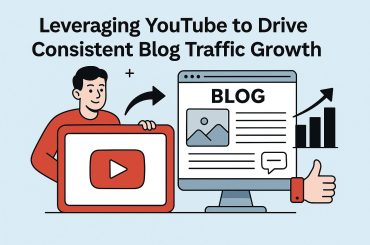10 copywriting tips to increase conversion
Copywriting is a crucial aspect of any successful marketing strategy. It has the power to grab your audience’s attention, stir their emotions and ultimately persuade them to take action. However, crafting compelling copy that converts isn’t always easy – it requires a combination of art and science. In this blog post, we’ll share ten essential tips for enhancing your copywriting skills and increasing conversion rates. Whether you’re a seasoned marketer or just starting out in the world of copywriting, these tips will help you create persuasive content that resonates with your target audience and drives results.
Write a headline that’s clear and to the point
The headline is the first thing that your audience will see, and it’s often the deciding factor in whether they read on or move onto something else. That’s why it’s crucial to create a headline that grabs their attention and clearly conveys what your content is all about.
To write an effective headline, keep it simple and concise. Use clear language that accurately reflects the topic of your content – avoid trying to be too clever or using clickbait tactics as this can lead to disappointment for readers who were expecting something different.
Consider including keywords in your headlines that are relevant to both your target audience and search engines. This helps improve search engine optimization (SEO) by increasing visibility among potential readers searching for related topics online.
Make sure your headlines accurately reflect the content within the blog post. Don’t try to mislead or exaggerate just for clicks; instead, deliver on what you promised in the title by providing valuable insights or information on the topic at hand.
By following these tips, you’ll be able to craft clear and compelling headlines that entice readers while also supporting SEO efforts.
Use short sentences and paragraph breaks
Short sentences and paragraph breaks are essential for effective copywriting. Long blocks of text can quickly overwhelm readers, making it difficult for them to absorb the information you’re presenting. By breaking your content into small chunks, you make it easier for readers to scan through and find what they need.
When writing short sentences, keep in mind that brevity is key. Try to convey each idea using only a few words – this will help keep your writing concise and easy to understand. Avoid long-winded explanations or complex sentence structures that might confuse your audience.
Paragraph breaks are also crucial when crafting compelling copy. Each new paragraph signals a shift in topic or tone, giving readers an opportunity to pause and digest the previous section before moving on.
But don’t overdo it – too many paragraph breaks can make your content feel choppy and disjointed. Aim for a balance between short paragraphs that break up the text effectively without disrupting the flow of your overall message.
Using short sentences and paragraph breaks helps ensure your copy is both readable and engaging – two critical components of effective conversion-focused writing!
Use active voice
Using active voice is one of the most important copywriting tips to increase conversion. When you use active voice, your writing becomes more direct and engaging. Active voice puts the focus on the subject of the sentence and makes it clear who or what is performing the action.
Passive voice, on the other hand, can make your writing seem dull and unclear. It often leads to longer sentences that are harder to follow. Passive voice also makes it difficult for readers to understand who or what is taking action in a sentence.
To use active voice effectively in your copywriting, start by identifying the subject of each sentence. Then make sure that subject is performing an action, rather than having an action done to it. For example, instead of saying “The product was purchased by many customers,” say “Many customers purchased our product.”
By using active voice in your copywriting, you can create stronger calls-to-action and more compelling content overall. So next time you’re drafting up some marketing materials, be sure to keep this tip top-of-mind!
Use persuasive language
One of the most important aspects of copywriting is using persuasive language. Persuasive language can be defined as using words and phrases that convince your reader to take a particular action or adopt a certain point of view.
To use persuasive language effectively, it’s crucial to understand your target audience. What are their pain points? What motivates them? By understanding these factors, you can tailor your messaging to resonate with them on a deep level.
Another tip for using persuasive language is to focus on benefits rather than features. Instead of just listing the features of your product or service, explain how those features will benefit the customer. This creates an emotional connection and helps the reader see the value in what you’re offering.
Using strong verbs can also make a big impact in persuading your reader. Verbs like “transform,” “boost,” and “revolutionize” create excitement and energy around what you’re saying.
Remember that repetition is key when it comes to persuasion. Repeating key phrases throughout your copy reinforces your message and makes it more memorable for the reader.
By incorporating these tips into your writing, you’ll be able to use persuasive language effectively and increase conversions for whatever goal you have in mind!
Be concrete and specific
One of the most common mistakes in copywriting is using vague or generic language. To truly connect with your audience and persuade them to take action, you need to be concrete and specific in your messaging.
Instead of simply saying “our product is great”, provide specific details about what makes it great. Use descriptive language to paint a clear picture for your readers.
For example, instead of saying “our shoes are comfortable”, say “our shoes feature a memory foam insole that molds to the shape of your foot for maximum comfort”. This conveys more information and creates a stronger emotional connection with potential customers.
When writing copy, think about the benefits and features of your product or service and highlight them in a tangible way. Avoid overly technical jargon or industry buzzwords that can confuse or alienate readers.
By being concrete and specific, you’ll not only improve conversion rates but also establish trust with your audience by demonstrating expertise and attention to detail.
Tell a story
One of the most effective ways to increase conversion through copywriting is by telling a story. Stories have an innate ability to engage and connect with people, making them more likely to take action. But how do you tell a good story in your copy?
Understand the purpose of your story. It should be relevant and tie into what you’re selling or promoting. For example, if you’re promoting a fitness product, share a success story about someone who achieved their goals using that product.
Make it relatable by highlighting common struggles or challenges that your target audience may face. This helps create empathy and emotional connection.
Use descriptive language to paint a vivid picture in the reader’s mind. Use sensory details such as sight, sound, taste and touch to make the story come alive.
End with a clear call-to-action that ties back to the main message of your story. By doing so, readers will be more likely to take action because they’ve been emotionally invested in your narrative.
In conclusion (just kidding!), telling stories is an incredibly powerful tool for increasing conversion rates through copywriting. When done well, it can help build trust between you and your audience while giving them motivation to act on what you’re offering them.
Use images and videos
Using images and videos can greatly enhance your copywriting efforts by adding visual interest and providing additional information to the reader. When selecting images or videos to use in your copy, it’s important to choose ones that are relevant and high quality.
Including product images or demonstration videos can provide customers with a better understanding of what they will be purchasing. For service-based businesses, using photos or videos of successful past projects helps potential clients visualize the end result.
It’s also important to consider the placement of these visuals within your copy. Including them throughout the text breaks up large chunks of text, making it more visually appealing and easier for readers to digest.
When choosing video content, keep in mind that shorter is often better. Attention spans are short online, so aim for concise clips that get straight to the point without sacrificing key information.
Incorporating visual elements into your writing can help increase engagement and conversions by giving readers a more dynamic experience while consuming your content.
Use calls to action
One crucial aspect of copywriting is including calls to action (CTAs) in your content. It’s not enough to write persuasive and engaging copy; you also need to guide the reader towards the desired action. Here are some tips on using CTAs effectively:
Make sure your CTA stands out visually. Use contrasting colors or bold text to draw attention to it. Be clear about what you want the reader to do next – whether it’s signing up for a newsletter, making a purchase or booking a consultation.
Use urgent language that creates a sense of immediacy and encourages the reader to act quickly. For example, “Limited time offer” or “Don’t miss out!” can be effective phrases.
Consider placing multiple CTAs throughout your content – at the beginning, middle and end – so that readers have multiple opportunities to engage with your brand.
Remember that an effective CTA can mean the difference between a visitor simply browsing your site and becoming a customer.






